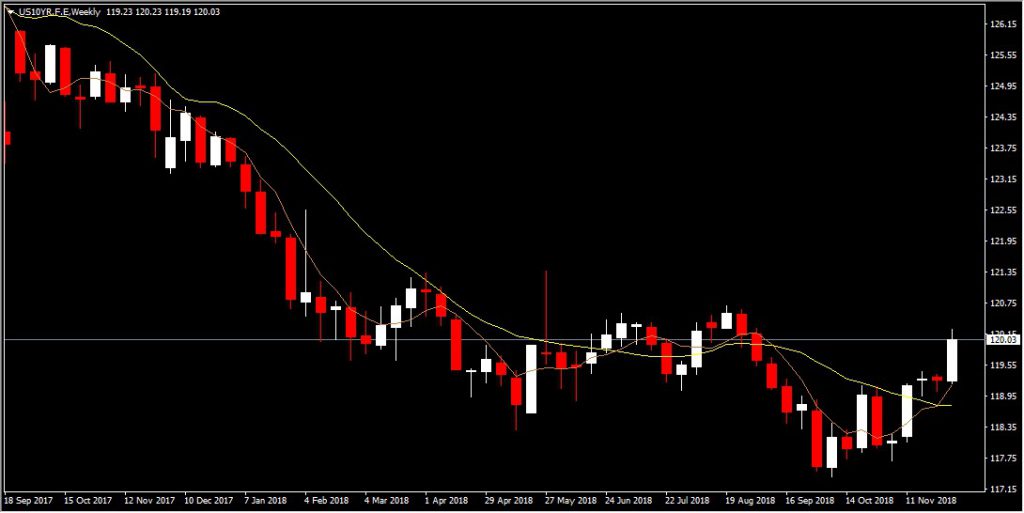Put simply, bonds are really the certificates a government, or any private corporation, issues as proof that they have borrowed from you. In other words, investing in a US government bond means that you have lent the US government money. For example, a $1000 bond from the US government suggests that it owes you $1000 and is due to pay them at a pre-specified period of time. This pre-specified period is called the bond’s maturity. As such, when we specify that a bond has a 5-year maturity it means that the said bond is due to be repaid in 5 years from now.
In addition to the value and the maturity date, bonds also have what is called the coupon rate. The coupon rate is nothing more than the annual interest rate paid on the bond, which is fixed throughout the bond’s life. This is akin to the interest rate we have to pay for any loan we take. In a numerical example, if the coupon rate is 4% then for a bond with a value at maturity of $1000 we would be earning $40 per year.
Where things get difficult is when we try to estimate what is known as the yield. The yield is essentially the total return we would be earning if we invested in a bond at the secondary market, i.e. it was not bought directly from the government. This is because the price in the secondary market, what is commonly known as the bond price, usually differs from the price at maturity.
Let’s have an example: if we bought a 5-year bond with a value at maturity of $1000, at a price of $1000, with the coupon rate standing at 4%, this would mean that our annual return would be exactly 4%. If, in contrast, we bought the same bond at $900, then the bond total return (i.e. the yield) would be the interest generated ($40) plus the $100 we would earn at maturity. Thus, the bondholder would be earning much more than before. Supposing that the increase in price would be evenly distributed across the years, then each year we would be earning $20 more, at a total of $60 ($40 of interest plus $20 of price appreciation). This would now be divided by the $900 price, making the yield stand at approximately 6.7%. Naturally, had we bought the bond at $1020 then our yield would have stood at approximately 3.5% per year.
The above illustrates that there exists an inverse relationship between yield and price. As the bond price increases, the less total return investors will be earning while lower prices would mean that the bond yield increases.
Naturally, given that yield includes both the coupon and the price, there is some interplay between these variables. Most bonds’ coupon rates (other than some inflation-adjusted bonds called TIPS and some other more obscure issues) are stable throughout the lifetime of the bond. The fact that the interest rate is fixed means that the bearer has zero risk given that the return is certain, which has also nicknamed bond markets as “fixed income” markets.
The only type of risk in bond investing pertains to the borrower’s ability to repay the amount at maturity. To this end, a rating is placed on the borrower’s ability to repay which signals the riskiness of the bond issue. The higher the rating, the less the perceived risk and the less the risk premium the bond issuer will have to pay. In essence, the risk premium on the bond is the additional interest rate (or the discount in the price) that the bond issuer will have to suffer given that it has a higher probability to default.
Once the interest rate on the bond is set, on the basis of the prevailing interest rate at the moment and the perceived risk profile of the company or government issuing it, it will not change no matter if it is held for 30 years. This illustrates why bonds are usually out of fad when interest rates are rising; if we expect that interest rates will increase in the future then this means that we would most likely receive more return from a bond issued in the future. Thus, we would be less willing to put our money in a bond which is currently being issued. The only way investors could circumvent this is by offering a lower price for the bond thus increasing the yield.
The same would hold if investors expect lower economic growth as this would implicitly mean that interest rates would be lower in the future and hence investors would seek to gain from higher yields and interest rates today. In an issuer-specific reason, if the bonds issued by Greece or IBM are now considered to be riskier than before, prices on these bonds will likely drop, hence increasing the yield. This is usually because many institutional investors such as banks and pension funds have specific rating thresholds under which they cannot invest. Hence, when Greece’s rating dropped below that rating threshold, pension funds and banks will be forced to sell, thus reducing price and increasing the yield.
Other than the prevailing interest rate and market expectations over its future course and the risk profile of the issuer, bond prices and yields are also affected by macroeconomic risk aversion. The higher the risk aversion the more money moves towards the bond market which offers a certain return, compared to the uncertain returns offered by the stock market. Consequently, the higher the risk aversion in the economy the higher prices will be, given that more investors seek to purchase bonds, and thus the lower the bond yield. This was the prevailing market sentiment during the financial crisis where, in addition to record low interest rates, fear about the banking sector led to a flight to safe-haven assets, i.e. government bonds, with investors often receiving negative yields. However, as the financial crisis ended and the overall economy registered positive rates of growth, along with expectations of rate hikes, bond prices declined and yields increased (see figure below) as investors sought to put their funds elsewhere.
Summing up, the bond market can be as volatile and more heavily traded than the stock market and could provide knowledgeable traders will good investment opportunities. Given the nature of the market, bond prices and yields are more prone to changes in the fundamentals. However, it should be borne in mind that proper risk management should always be conducted and opportunities need to be properly assessed before actual trading takes place.
Dr Nektarios Michail
Market Analyst
HotForex
Disclaimer: This material is provided as a general marketing communication for information purposes only and does not constitute an independent investment research. Nothing in this communication contains, or should be considered as containing, an investment advice or an investment recommendation or a solicitation for the purpose of buying or selling of any financial instrument. All information provided is gathered from reputable sources and any information containing an indication of past performance is not a guarantee or reliable indicator of future performance. Users acknowledge that any investment in FX and CFDs products is characterized by a certain degree of uncertainty and that any investment of this nature involves a high level of risk for which the users are solely responsible and liable. We assume no liability for any loss arising from any investment made based on the information provided in this communication. This communication must not be reproduced or further distributed without our prior written permission.




















